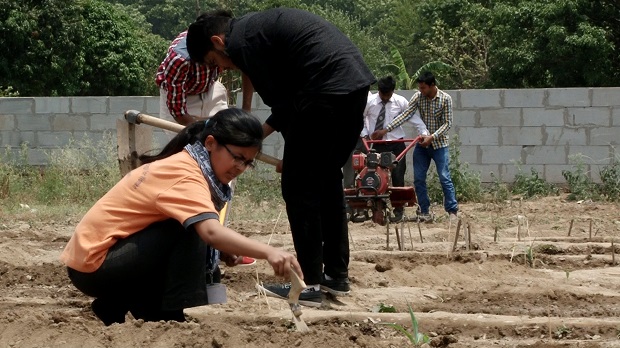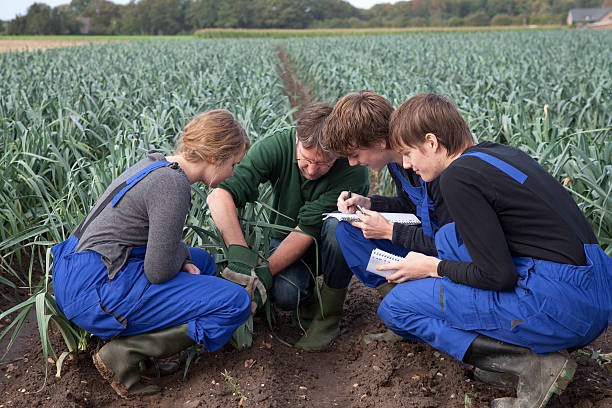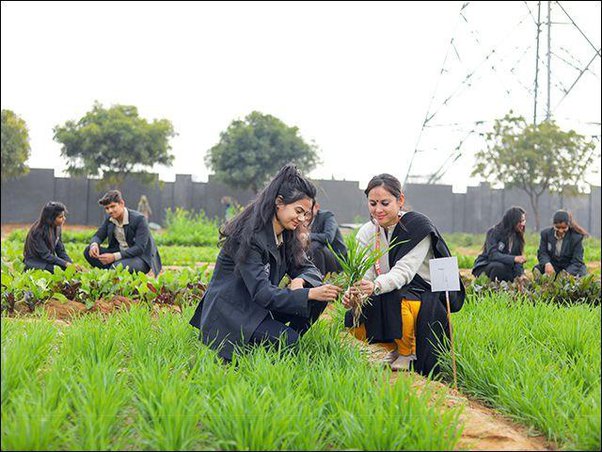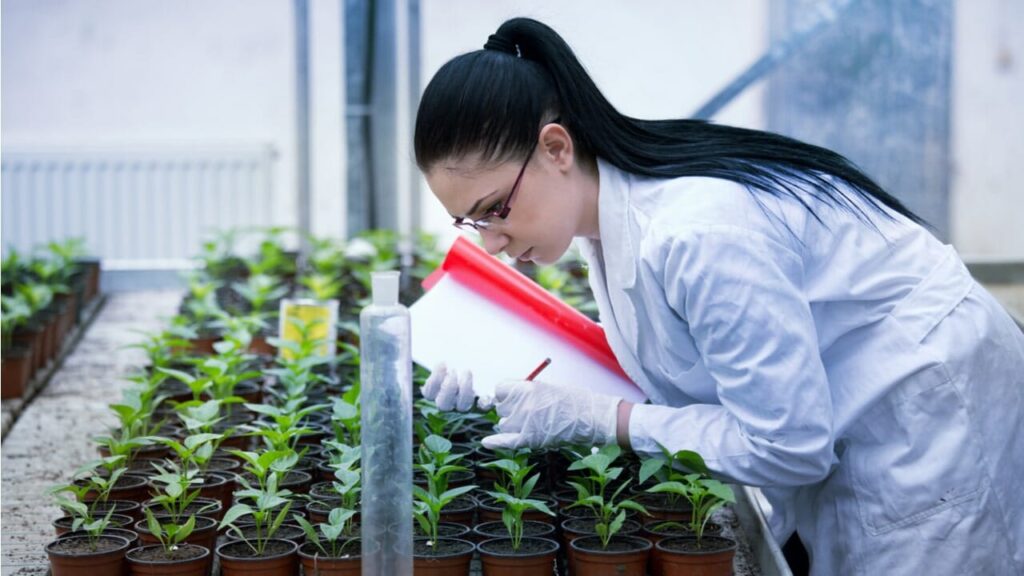The USA is an excellent destination for agriculture students due to its top-ranked universities, diverse agricultural regions, and strong focus on research and innovation. Prestigious institutions like Cornell, UC Davis, and Iowa State offer cutting-edge facilities and hands-on learning. The country’s varied agricultural environments provide a broad spectrum of study options.
Leading in biotechnology, sustainable farming, and precision agriculture, US universities often collaborate with private and government sectors. Financial support through scholarships and grants makes education accessible. Graduates benefit from extensive career opportunities and professional networks in a large, diverse agricultural sector.
Emphasizing critical thinking, creativity, and practical experience, US education equips students with essential skills for the agriculture industry, making it a highly attractive choice.
What are the top-ranked universities for agriculture in the USA?

The top-ranked universities for agriculture in the USA are:
- University of California, Davis (UC Davis) – Renowned for its comprehensive agricultural programs and research facilities.
- Cornell University – Offers a wide range of programs in agriculture and life sciences, with a strong emphasis on research.
- University of Illinois at Urbana-Champaign – Known for its innovative research and extensive agricultural programs.
- Purdue University – Has a strong focus on agricultural science, engineering, and technology.
- Michigan State University – Offers extensive programs in agricultural and natural resources.
- Texas A&M University – Recognized for its large-scale research and diverse agricultural studies.
- University of Florida – Offers robust programs in agricultural and life sciences.
- Ohio State University – Known for its comprehensive agricultural programs and research.
- University of Wisconsin-Madison – Has strong agricultural programs with a focus on research and development.
- University of Minnesota – Offers extensive agricultural education and research opportunities.
These universities are recognized for their contributions to agricultural research, education, and innovation.
How diverse are the agricultural regions in the USA?

The agricultural regions in the USA are highly diverse, reflecting the country’s vast size and varied climates. In the Midwest, often referred to as the Corn Belt, the primary crops are corn and soybeans, thriving in the fertile soils, flat terrain, and a climate conducive to large-scale grain farming. The Great Plains are known for wheat, corn, and sorghum, characterized by large, open fields suitable for extensive grain and livestock farming in a semi-arid climate. California’s Central Valley stands out with its Mediterranean climate and irrigated farming, making it one of the most productive agricultural regions globally, producing fruits, vegetables, nuts, and dairy.
The Southeast features crops like cotton, tobacco, peanuts, and poultry, supported by a warm climate, high humidity, and a long growing season. The Pacific Northwest, with its diverse climate ranging from wet to dry regions, supports specialty crops such as apples, pears, cherries, hops, and wine grapes. In the Northeast, agriculture includes dairy, apples, and maple syrup, with smaller farms, diverse crops, and a cooler climate with distinct seasons.
The Southern Plains focus on cotton, wheat, and beef cattle, with a semi-arid to arid climate supporting large ranches and irrigated crops. Delta States, known for their warm climate and fertile alluvial soils, produce rice, soybeans, and catfish, leveraging abundant water resources. The Mountain States, with diverse topography and high altitudes, grow potatoes, barley, and support livestock, relying heavily on irrigation due to limited rainfall. Finally, Appalachia’s mountainous terrain hosts small farms with a focus on diversified agriculture, including tobacco, corn, and mixed farming.
This regional diversity enables the USA to produce a wide range of agricultural products, from grains and livestock to fruits and vegetables, significantly contributing to both domestic consumption and export markets.
How does the USA lead in agricultural research and innovation?

The USA leads in agricultural research and innovation through a combination of robust institutional support, extensive funding, advanced technology, and collaborative efforts. Here are the key factors contributing to its leadership:
Land-Grant Universities
Established under the Morrill Act of 1862, land-grant universities like Cornell, UC Davis, and Texas A&M have been pivotal in advancing agricultural education and research.
These institutions focus on practical agricultural studies and extend their research findings to the farming community through extension services.
Federal Agencies
Agencies such as the United States Department of Agriculture (USDA) play a crucial role. The USDA supports research through its Agricultural Research Service (ARS), National Institute of Food and Agriculture (NIFA), and other programs.
These agencies fund research projects, provide grants, and facilitate the dissemination of new agricultural technologies and practices.
Private Sector Involvement
The private sector, including major agricultural companies like Monsanto (now part of Bayer), John Deere, and Cargill, invests heavily in research and development.
These companies develop advanced technologies, such as genetically modified crops, precision agriculture tools, and innovative farming equipment, driving significant advancements in the field.
Research Institutions and Innovation Centers
The USA is home to numerous research institutions and innovation centers dedicated to agriculture. Examples include the Donald Danforth Plant Science Center and the International Food Policy Research Institute. These centers conduct cutting-edge research in areas like plant genetics, sustainable farming practices, and food security.
Technology Integration
The integration of advanced technologies such as biotechnology, robotics, artificial intelligence, and data analytics has revolutionized agriculture in the USA.
Precision agriculture, which uses GPS and sensor technology, allows for more efficient use of resources and better crop management. Biotechnology has led to the development of pest-resistant and high-yield crops.
Public-Private Partnerships
Collaborative efforts between public institutions and private companies foster innovation. Programs like the Foundation for Food and Agriculture Research (FFAR) promote public-private partnerships to tackle pressing agricultural challenges and support groundbreaking research.
Policy Support and Funding
Strong policy support and substantial funding from both federal and state governments ensure sustained progress in agricultural research. Grants, subsidies, and incentives encourage continuous innovation and adoption of new technologies by farmers.
Educational Programs and Workforce Development
The USA places a strong emphasis on agricultural education and workforce development. Programs aimed at training the next generation of agricultural scientists, researchers, and technologists ensure a steady flow of talent and fresh ideas into the sector.
What financial support and scholarships are available for agriculture students in the USA?

Agriculture students in the USA have access to a variety of financial support options and scholarships offered by federal and state governments, universities, private organizations, and industry associations. Federal and state grants include need-based options like Pell Grants and the Federal Supplemental Educational Opportunity Grant (FSEOG), as well as state-specific grants such as the California State University Agricultural Research Initiative (ARI), which funds research projects.
Universities, especially land-grant institutions like Texas A&M, Cornell, and UC Davis, provide numerous scholarships specifically for agriculture students, which can be merit-based, need-based, or research-focused. Many universities also offer fellowships for graduate students in agriculture, covering tuition and providing stipends for research.
Private organizations and industry groups also offer substantial support. The National FFA Organization provides scholarships to students pursuing agriculture-related degrees, often sponsored by industry partners. The American Farm Bureau Federation, Monsanto Fund through the America’s Farmers Grow Ag Leaders program, and the National Corn Growers Association all offer various scholarships for students in agriculture.
Professional and trade associations like the American Society of Agronomy (ASA), Soil Science Society of America (SSSA), and American Society of Animal Science (ASAS) offer scholarships for undergraduate and graduate students in specific agricultural disciplines. Nonprofit and philanthropic organizations, such as the Gates Millennium Scholars Program and Annie’s Sustainable Agriculture Scholarship, provide substantial financial support for students pursuing degrees in agriculture, with a focus on minority students and sustainable practices.
Employer-sponsored programs are another important resource. Agricultural companies like John Deere, Cargill, and Syngenta offer scholarships and internships, providing both financial aid and practical experience. Extension programs and cooperative initiatives, such as 4-H Youth Development Programs and Cooperative Extension Services, also provide funding opportunities for students engaged in community-based agricultural research and outreach.
These diverse financial supports and scholarships help agriculture students manage educational expenses and gain valuable experience, fostering the next generation of agricultural professionals.
FAQ’s
Which country is lowest in agriculture?
The country with the least emphasis on agriculture is Singapore, primarily due to its limited land availability and focus on urbanization and technology-driven industries.
Which country is best after BSc agriculture?
Canada is often considered a favorable destination for BSc agriculture graduates, offering diverse career opportunities, research facilities, and advanced agricultural practices.
What is the highest paid job in agriculture?
Agricultural Engineering positions, such as agricultural engineering managers or agricultural project managers, often command some of the highest salaries in the agriculture sector due to the specialized skills and expertise required.
What is the highest salary in agri?
The highest salaries in agriculture are typically earned by agricultural engineers, agricultural economists, and agricultural operations managers, with potential earnings reaching six figures or more, depending on experience and specialization.
What are the top 5 agricultural countries?
The top 5 agricultural countries based on production and export include the United States, China, India, Brazil, and Indonesia, each contributing significantly to global agricultural output and trade.
Final Words
The USA is a great choice for agriculture students due to its top-ranked universities, diverse farming regions, and strong emphasis on research and innovation. Students have access to excellent educational facilities, hands-on learning opportunities, and a variety of crops and farming techniques. Financial support through scholarships and grants makes studying more accessible. Graduates can look forward to numerous career opportunities and building valuable professional networks.
The rich cultural and educational experiences further enhance the benefits of studying agriculture in the USA. Overall, the combination of quality education, research opportunities, and career prospects makes the USA an attractive destination for agriculture students.
